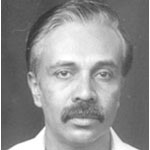WWith the tenure of the present President Pranab Mukherjee ending in July 2017, the stage is set for the election of the country’s next First Citizen, and he/she will be in place by the time this article sees the light of day.
The odds-on favourite of course is the candidate nominated by the ruling National Democratic Alliance (NDA), Ram Nath Kovind, the former Governor of Bihar, who is expected to secure over sixty percent of the votes. An eminent lawyer who practiced in the Supreme Court, a two time Rajya Sabha member, a non-controversial Governor and also a member of the BJP, Kovind certainly has impeccable credentials, and is a deserving candidate for the President’s post. But if one were to scratch the surface the raison d’ etre for his nomination becomes clear.
An opinion has been steadily gaining ground not only in political circles, but in the media and elsewhere that his candidature had much to do with his Dalit background and hence the NDA (read BJP) was actually playing vote bank politics even in the matter of sending someone to Raisina Hill; unabashedly wooing the Dalit community which traditionally has not formed a part of its support base.
The announcement of his candidature was immediately followed by a statement by a minister in the Union Cabinet, a Dalit, Ram Vilas Paswan, who stated in no uncertain terms that anyone who opposed Kovind’s nomination was anti-Dalit!
However, Kovind’s selection left the opposition parties with no option but to put up their own Dalit candidate, Meira Kumar, thereby reducing the whole affair to a caste battle between two highly distinguished persons. Meira Kumar is the former Speaker of the Lok Sabha and daughter of the dalit icon and former Deputy Prime Minister Babu Jagjivan Ram. She is also a lawyer and former diplomat, and has served as a Union Minister in the Dr. Manmohan Singh cabinet. Yet, her chances of defeating Kovind are highly remote, as it will be difficult for her to garner the necessary votes.
Independent India has seen a number of Presidents in the last seven decades and while most of them have had political backgrounds, there have been philosophers like Dr. S. Radhakrishnan, educationists like Dr. Zakir Hussain, an Ambassador like K.R. Narayanan and an atomic scientist and a ‘Bharat Ratna’ like Dr. A.P.J. Abdul Kalam, who served the country with great distinction.
An apolitical President has never proved to be a bane. Dr. Kalam, dubbed the ‘People’s President’, was easily one of the most popular occupants of Rashtrapathi Bhavan, who used his tenure to reach out to the youth, travelling the length and breadth of the country on lecture tours.
This time around too there was talk that an eminent personality sans political affiliations could be proposed as a candidate and names like Gopalakrishna Gandhi, grandson of Mahatma Gandhi, E. Sreedharan, the brain behind India’s metro rail project floated around, before the Government decided to plump for Ram Nath Kovind, and the opposition for Meira Kumar.
India does not have a presidential form of government, and the President is constitutionally bound to act as per the advice of the Union Cabinet. Where the ruling party in the centre commands a comfortable majority, his role becomes even more restricted. However, all legislation that have been passed by both houses of Parliament should necessarily receive his sanction before they become law. He is also the supreme commander in chief of the country’s armed forces. A lot of dignity is attached to the office and political figures who don the mantle are required to shed their political affiliations and act impartially keeping the interests of the country and the people uppermost in their minds. Considering his track record, Ram Nath Kovind can be expected to rise to the expectation of every Indian.

 [/column]
[/column]